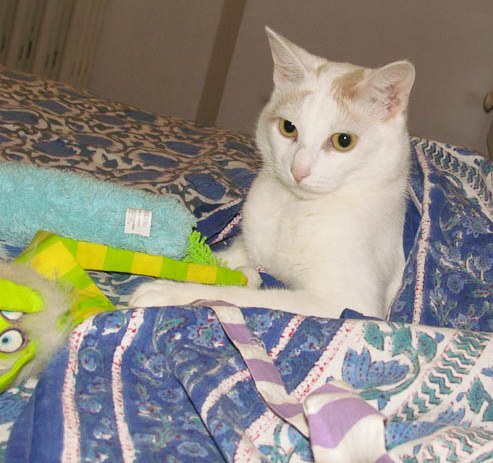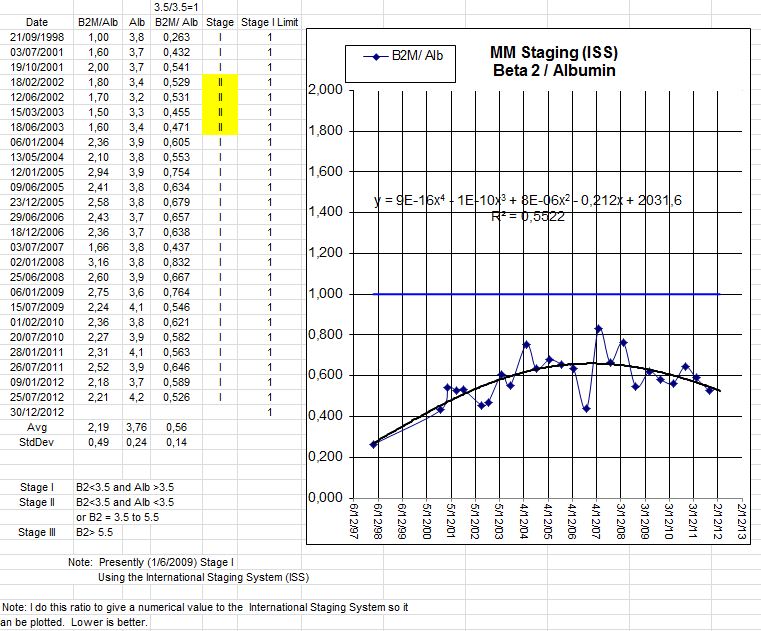As promised, here is TAB’s summer 2012 update. Before reading it, though, please take note of a KEY sentence: These supplements may or may not work for others as they apparently do for me. That is soooo true. It’s the same with curcumin, which may not work for some folks yet works splendidly for others (like yours truly 🙂 ).
Another thing to keep in mind is that TAB has IgA lambda myeloma. Does his protocol therefore work best for IgA lambda? Who knows? Until we try (and I’m planning to test his protocol at some point), we won’t know…
I’d also like to thank all those who offered to help me with the technical issues. In particular, Rudi, who already had the TAB files in his possession and went ahead and converted all the graphs into an “uploadable” format. Grazie, Rudi! 🙂 And Richie, who offered to help, too, which was super kind of you, thanks!!! And Stefano, my hubby, who has been working so hard but finally had the time to show me how to convert the graphs etc. (so the Table at the bottom of this page is mine, all mine, yaaay!).
By the way, TAB created lots of graphs, which take up a lot of space in a post and are difficult to read (small numbers etc.). So I’m probably going to resort to Plan B, which you’ll hear about in the next few days. In the meantime, here’s TAB’s summer 2012 update together with his current supplement protocol. I put the text in bold print, so it’s easier to read. Oh, of course, please ignore item no. 10 for now (that’s part of Plan B, as you will find out…). Okay, here goes (and now I can go convert his 2012 graph for tomorrow, I hope):
Current age 70. Updated 7/25/2012- Diagnosed 8/6/1998 with Multiple Myeloma IgA Lambda-
This is an update of my report “Smoldering Myeloma – 11 Year Case Study Using Supplements Revised Aug 6, 2009.”
Comments: 7/25/2012:
- I have been smoldering for 14 years.
- I remain asymptomatic with no C. R. A. B. symptoms. That is: No elevated Calcium, No Renal failure, No Anemia and No Bone Lesions.
- The latest IgA value of 3136 mg/dl is the lowest it has ever been since diagnosis! See IgA Graph. M Spike is 3060 mg/dl.
- I am pleased with the improvement in the Lambda light chain data and the Kappa/Lambda ratio since both are approaching their normal range.
- I remain on my daily supplements of Inositol, IP6, Selenium, Vitamin C and D, Trans Resveratrol, Curcumin plus a multivitamin. I take one half of the IP6 /Inositol first thing in the morning on an empty stomach and the remaining half before bed. I take the Curcumin all at once usually with a meal that contains some fat or oil. The other supplements I spread out over the day. Supplement cost is about $1.37 per day depending on current prices.
- My current supplement protocol is shown on the Supplement worksheet (see below). See the notes on the IgA worksheet for the changes that I made over the years in an attempt to refine the supplement protocol. I feel that the trend lines in the attached graphs show a definite correlation of improved markers with the taking of supplements. The MM has by no means been eradicated, but I have enjoyed a very homeostatic control of the markers with no symptoms thus far. These supplements may or may not work for others as they apparently do for me. I have been lucky to have had the time to see results which in some cases took years to manifest. I firmly believe that the supplements are responsible for my stable condition.
- I eat a typical American, somewhat well balanced diet, but nothing special. I enjoy golfing (walking) in the summer and have a Body Mass Index at the upper end of normal.
- No problems to report.
- According to the NEJM paper by Kyle et al (Ref #6 in the Case study report), the probability of progression from MGUS to Myeloma is a constant 1% per year. For smoldering myeloma, the risk of progression is greater in the early years but decreases with time. Examination of the graph of Figure 2 shows that after 14 years the slope of the smoldering curve is identical to the slope of the MGUS curve. I interpret this to mean that my risk of progression is now 1 % per year, the same as for a MGUS patient!
- I am providing this information in two different formats. One is in pdf format for easy reading and printing. The other is in Microsoft Excel spreadsheet format. If you would like to use my Excel spreadsheets to help you plot your data (which I highly recommend plotting ones own data) you can just replace my dates and values with your dates and values and the graphs should (hopefully) automatically plot for you. When I visit my doctor I show him the graphs which helps him to visualize any progress or lack thereof rather than him scanning through several pages of numbers which makes looking for trends very difficult.




